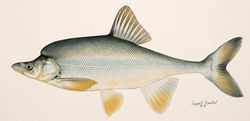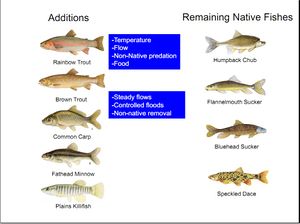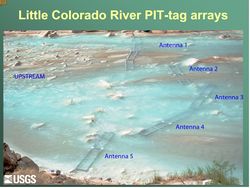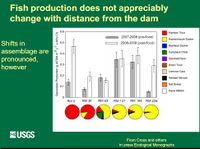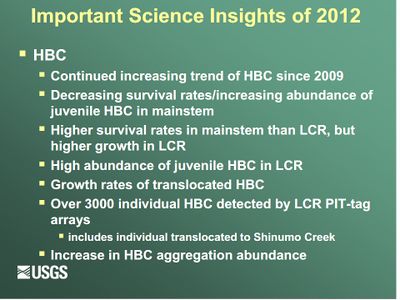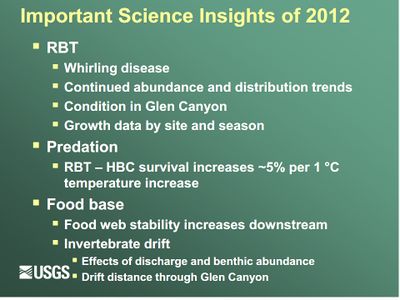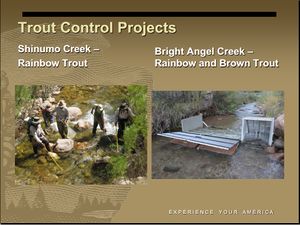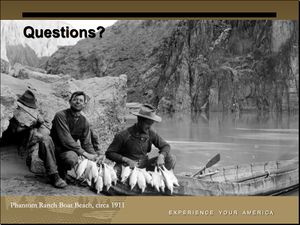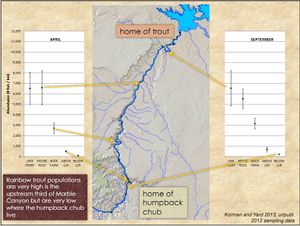Difference between revisions of "FISH"
(add) |
(add) |
||
| Line 138: | Line 138: | ||
*[http://www.nps.gov/grca/naturescience/upload/threat-endanger.pdf NPS Grand Canyon Treatened & Endangered Species List] | *[http://www.nps.gov/grca/naturescience/upload/threat-endanger.pdf NPS Grand Canyon Treatened & Endangered Species List] | ||
*[http://www.nps.gov/grca/naturescience/endangeredfish.htm NPS Endangered Fish Learning] | *[http://www.nps.gov/grca/naturescience/endangeredfish.htm NPS Endangered Fish Learning] | ||
| + | *[http://www.usbr.gov/uc/rm/amp/amwg/mtgs/13feb20/Draft_Mins_gk.pdf "NNFC will occur if necessary because it is a conservation measure required under the ESA to ensure protection of the HBC." | ||
| + | |||
<br> | <br> | ||
Revision as of 10:49, 23 July 2013
|
Description The Colorado River running through Grand Canyon once hosted one of the most distinctive fish assemblages in North America. The wild Colorado River presented fish with a challenging and variable aquatic habitat: very large spring floods, near-freezing winter temperatures, warm summer temperatures, and a heavy silt load. Note that only eight fish species were native to Grand Canyon. Of the eight species, six are endemic, meaning that they are only found in the Colorado River basin. (NPS)
|
| TBD (Motions) |
TBD (TBD) |
TBD (TBD) |
|---|
|
LINK: usbr/amp/amwg/mtgs/13feb20/Attach_07b|||| |
